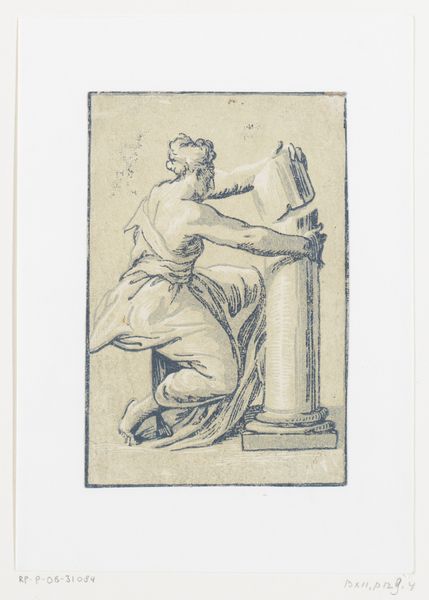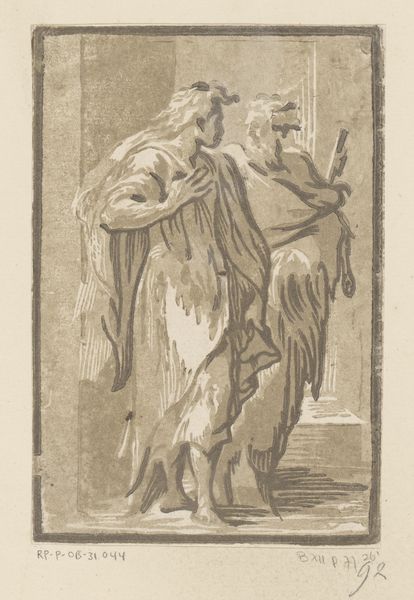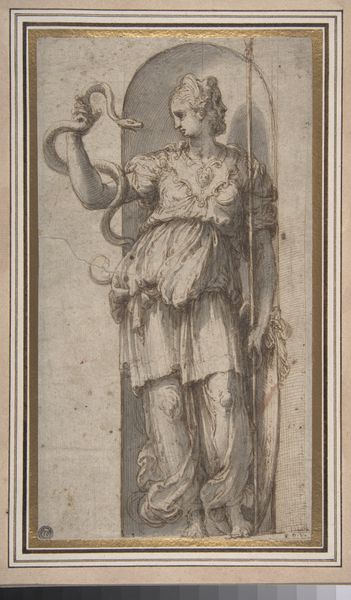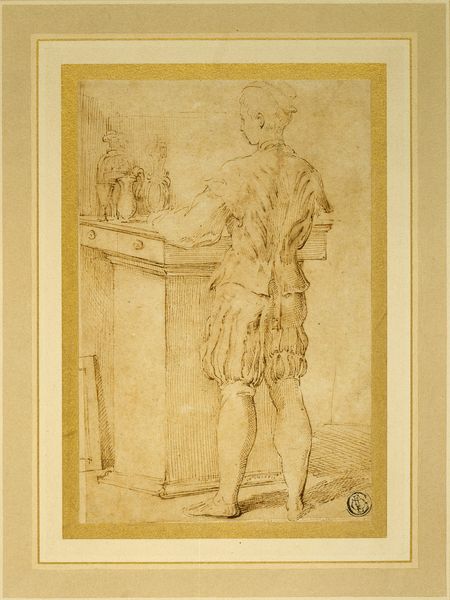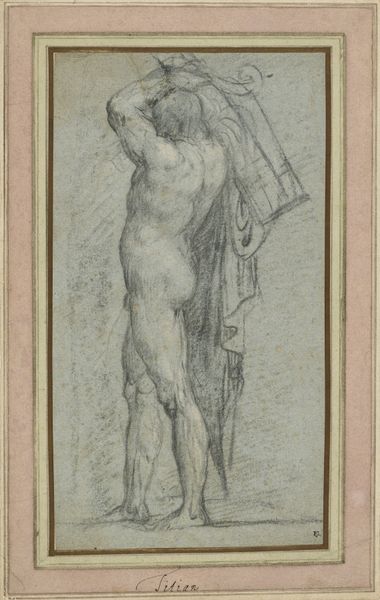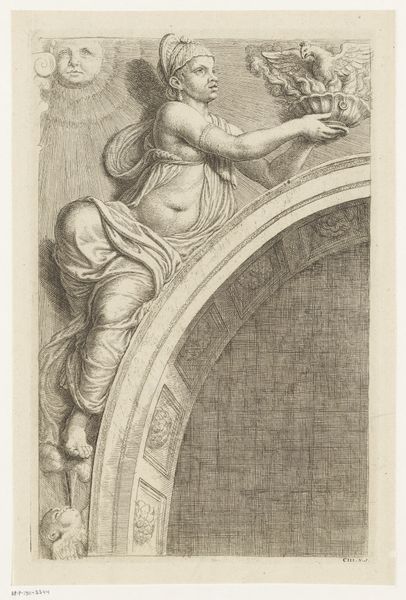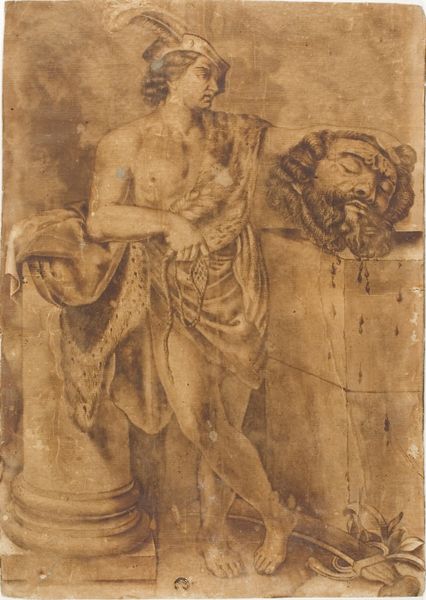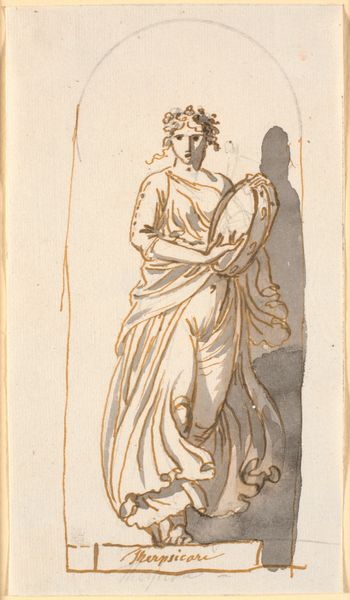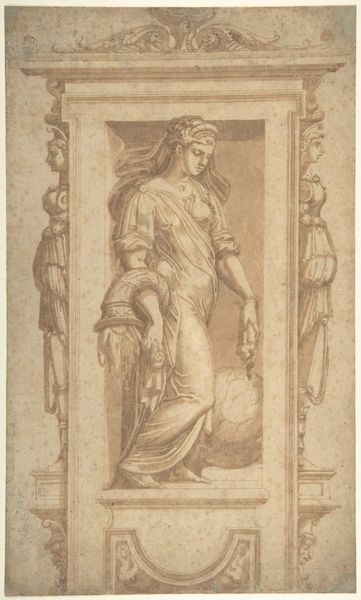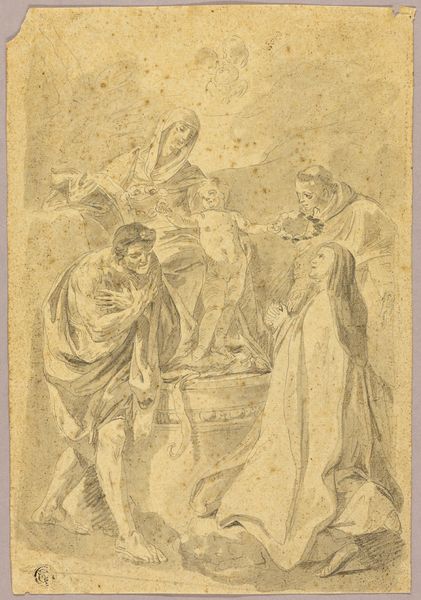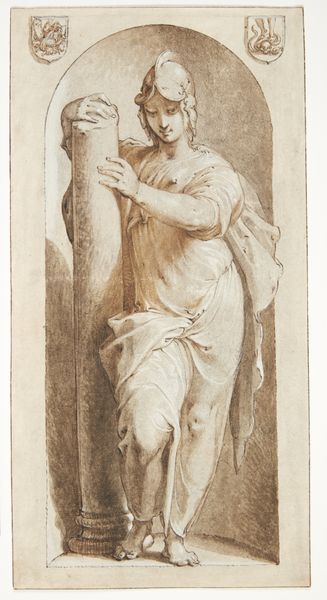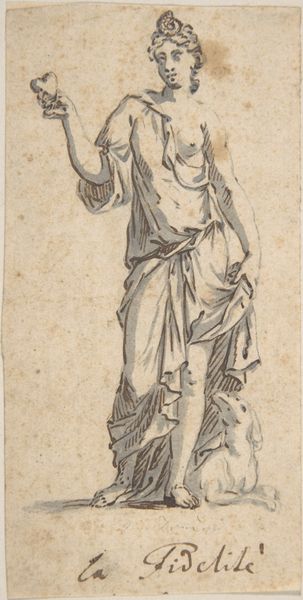
drawing, pencil, black-ink, pen
#
portrait
#
drawing
#
classical-realism
#
coloured pencil
#
pencil
#
black-ink
#
pen
#
watercolour illustration
#
history-painting
#
academic-art
#
pencil art
Dimensions: 7 x 4 3/8 in. (17.78 x 11.11 cm) (sheet)11 3/16 x 8 15/16 in. (28.42 x 22.7 cm) (outer frame)
Copyright: Public Domain
Curator: Looking at this sketch, I'm struck by a feeling of subdued power. It's simple, yet something about the man's stance and the objects next to him seems resolute. Editor: Indeed. What we have here is a drawing entitled "Figure Study of Mucius Scaevola," believed to be from the 18th century. The piece is currently housed at the Minneapolis Institute of Art. Curator: "Figure Study," huh? So, like a prep sketch for something bigger? He definitely looks the part of someone monumental. He's even got what seems like a cool portable brazier. Editor: Precisely. It’s executed using pen and black ink, along with pencil and some colored pencil touches. If we situate the piece within the 18th century, particularly in light of the artistic movement of Academic Art, we can start to understand the themes around valor and self-sacrifice that resonate strongly during periods of social and political change. Mucius Scaevola, if you recall, was the Roman hero who thrust his right hand into a fire to demonstrate his courage to King Porsena. Curator: Right, like, "Hey, I'm so brave, I'll just casually burn off a limb." I guess they didn't have therapy back then. No wonder he's giving off such a vibe of steely determination – makes sense knowing the context. The fact that it is "just" a study is what gives it such great appeal to me, almost as if glimpsing the artist thinking, makes the piece accessible and raw, and avoids becoming mere propaganda. Editor: It also underscores the intersection of civic virtue and masculinity prevalent during that time. These historical narratives provided moral instruction while reinforcing gendered ideals about leadership and fortitude. It is all the more important when thinking about it within a moment where empires started thinking about its colonies too, reinforcing values within societies that colonise, even if such behaviour implies self-destruction. Curator: Well, whatever the intention behind its creation, the artist clearly captures something elemental in his posture and expression. I love how his cape just... drapes. Like, even his clothes are all about defiance. I'm grateful for the sketch and what it implies. It certainly brings a different kind of energy and interpretation to historical painting, as the model isn't yet idealised into some demigod. Editor: An interesting dialogue between aesthetics, ethics and power, I'd say! Curator: Absolutely, and one worth contemplating as we navigate our present moment.
Comments
No comments
Be the first to comment and join the conversation on the ultimate creative platform.

